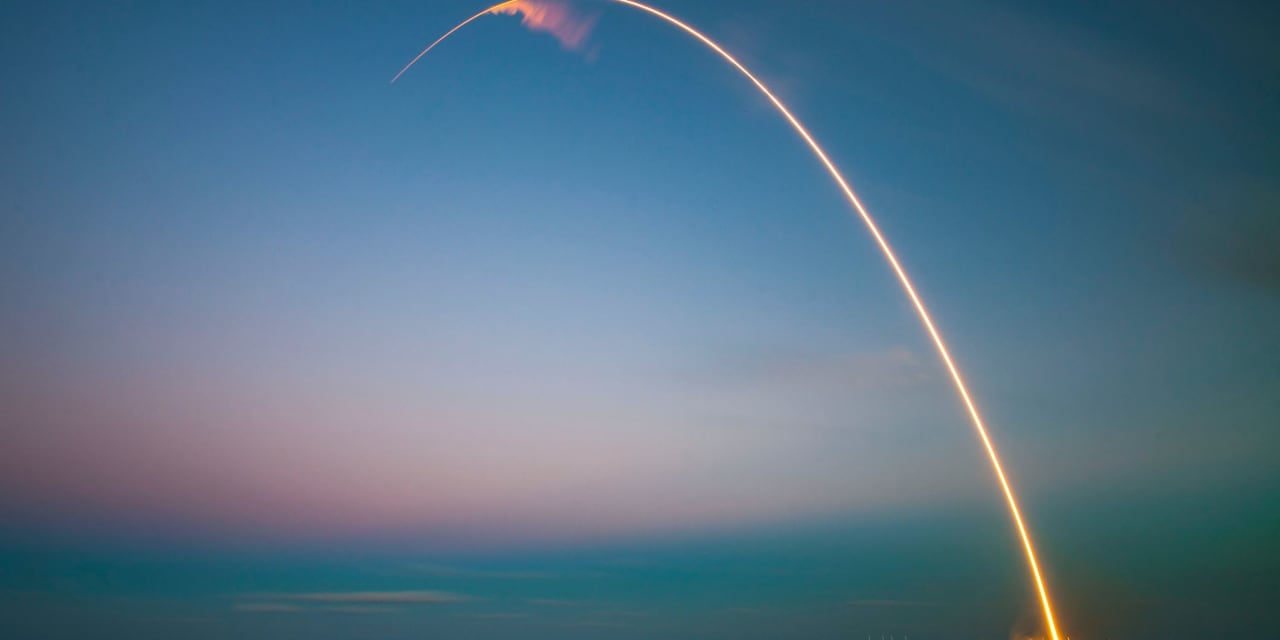It’s been a busy couple of weeks in the space business. The competition is feverishly trying to catch leader SpaceX. They are making progress, just not very quickly.
Few, if any, can match the marriage of hardware and applications that have made Elon Musk’s SpaceX the equivalent of
Tesla,
but for space.
This past week, United Launch Alliance, the space launch joint venture of
Boeing
and
Lockheed Martin,
launched its Vulcan Centaur rocket for the first time. It carried a lander that is now heading to the moon.
The launch was a success. Vulcan Centaur is ULA’s next-generation launch system that utilizes U.S.-built rocket engines from Jeff Bezos’ space company Blue Origin. Bezos’ other company,
Amazon.com,
has contracted with ULA, and other launch providers, to help get Amazon’s Kuiper network of satellites into orbit. Those will deliver space-based Wi-Fi to Amazon Web Service customers and others.
ULA is building rockets to compete with SpaceX, Blue Origin is building rocket engines to compete with SpaceX, and Amazon is building satellites to compete with SpaceX’s Starlink space-based Wi-Fi service.
A lot is happening, it just isn’t clear anyone can catch up.
SpaceX is “not the only show in town, but they are the biggest, baddest and fastest,” says Andrew Chanin, found of ProcureAM, which runs the
Procure Space ETF
that trades under the symbol “UFO” and provides investors with companies building businesses in space.
Vulcan Centaur has launched once in 2024. SpaceX has already launched four times. In 2023, SpaceX launched 98 times, accounting for about 45% of all orbital space launches around the globe. The 45% figure understated the dominance. SpaceX carried close to 80% of all the mass carried into orbit in 2023.
What’s more, SpaceX grew launches by 60% in 2023. The rest of the world held launches flat.
Even though SpaceX is the leading space company, Chanin’s UFO doesn’t hold SpaceX shares. It’s still privately held. But SpaceX is worth some $175 billion based on recent private market transactions. That’s roughly what Boeing is worth.
Launch dominance doesn’t account for the majority of SpaceX’s value. Starlink does.
Roughly 60% of SpaceX’s 2023 launches were carrying SpaceX satellites into low earth orbit. SpaceX now has over 5,000 satellites orbiting the Earth, providing space-based Wi-Fi to homes and businesses.
Its growth has been impressive. SpaceX ended 2022 with about 1 million Starlink subscribers. It ended 2022 with about 2.2 million subscribers, with some 900,000 outside the U.S. Even more impressive is the financial results achieved. In November, Musk said that Starlink was “cash-flow” break even.
SpaceX is an interesting business. It essentially invented reusable rockets that could be sent into space, returned, and used again, dramatically lowering the cost of reaching orbit. Its technology was one-of-one in the space business. Then to generate enough demand to fill up its launch schedule, SpaceX created Starlink—an application that enhanced the value of its launch business.
It worked handsomely—and now everyone is left trying to catch up.
Write to Al Root at [email protected]
Read the full article here




